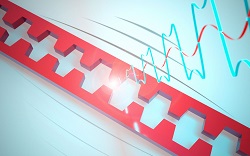Final design parameters for new particle decelerator
Several well known particle physics research facilities are located in Europe. Funding from the HUMAN POTENTIAL Programme was set aside to further develop this infrastructure. For instance, the goal of the HITRAP project was to establish a laboratory dedicated to trapping highly charged heavy ions. The research consortium included nine partners from seven different EU Member States and was led by GSI Helmholtzzentrum für Schwerionenforschung GmbH in Germany. The design of several important components of the HITRAP decelerator constituted an important project deliverable. Beam dynamics calculations were performed from the Experimental storage ring (ESR) through the cooler trap, including the re-buncher, the Interdigital H-mode (IH) structure and the Radio-frequency quadrupole (RFQ). Matching the phase spread from ESR to IH-structure was enhanced by incorporating a Double drift re-buncher (DDB) while a low energy de-buncher helped improve injection efficiency into the HITRAP cooler trap. The result was a system capable of decelerating 70\;% of the particles drawn from storage. Magnetic quadrupole lens data, three-dimensional CAD drawings and other essential design parameters were assembled in order to facilitate the ensuing tender procedures. The completion of the final design of a new particle decelerator is certain to contribute to extending Europe's legacy in particle physics.







